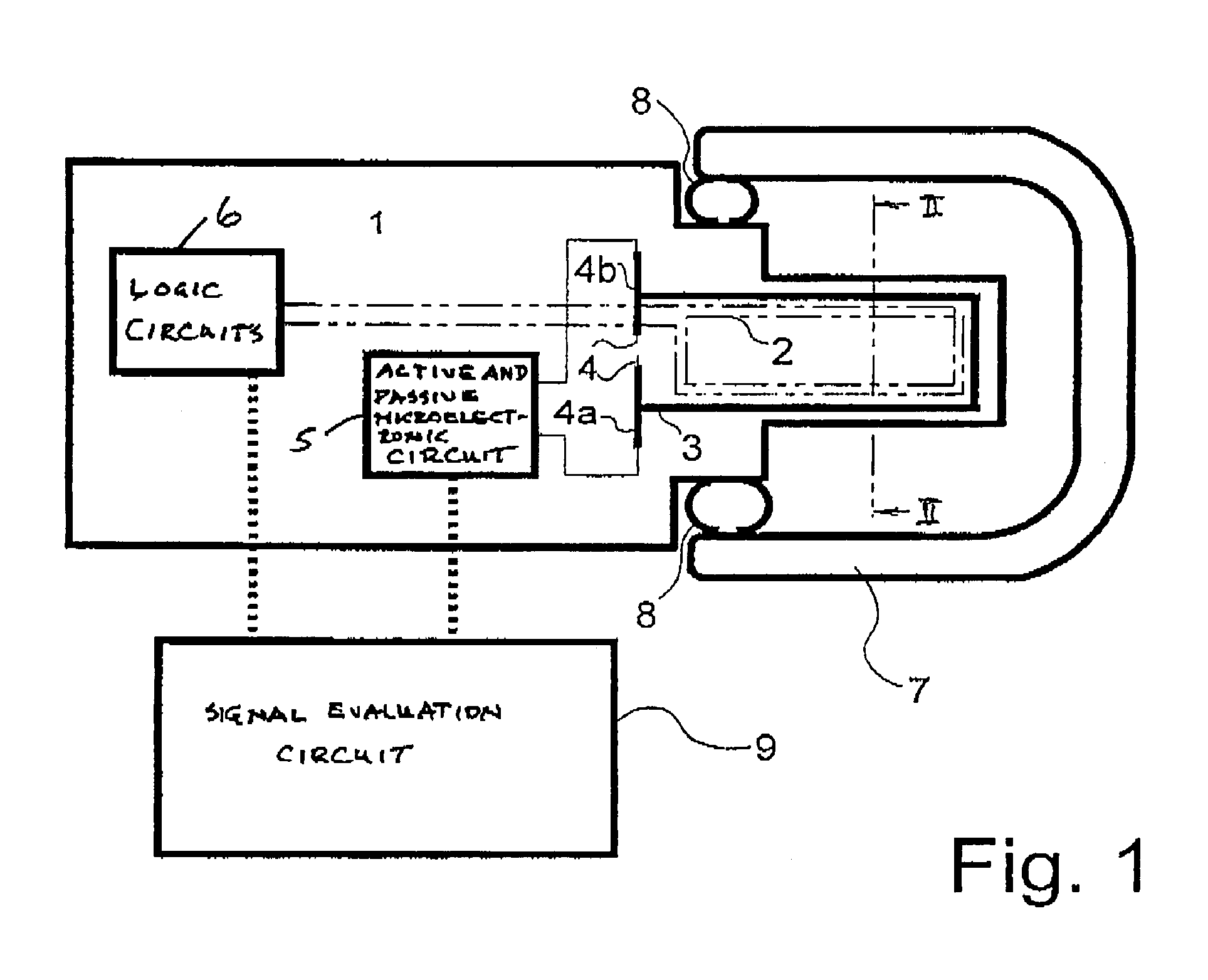Method and apparatus for measuring viscosity
- Summary
- Abstract
- Description
- Claims
- Application Information
AI Technical Summary
Benefits of technology
Problems solved by technology
Method used
Image
Examples
Embodiment Construction
[0032]A preferred embodiment of the invention will hereinafter be described with reference to FIG. 1 and FIG. 2. An elongate body or substrate 1 of silicon of substantially square cross section is provided at its right end, as seen in FIG. 1, with a substantially coaxially disposed extension, hereinafter sometimes referred to as a tip, of reduced diameter. By way of example, the length and width of the extension may be about 1 mm and about 300 μm, respectively. The extension supports energy conducting loops made of aluminum, disposed in parallel and connected to sources of energy (not shown). The energy may be direct current and / or high frequency voltage, preferably in the Ghz range. Some of the energy conducting loops, hereinafter referred to as loops, are connected in series and form a flat or loop coil 2 rigidly connected to, or embedded in, the silicon substrate. A further loop 3 made from passivated aluminum and disposed in a measuring zone is extending in a cantilevered fashio...
PUM
 Login to View More
Login to View More Abstract
Description
Claims
Application Information
 Login to View More
Login to View More - R&D
- Intellectual Property
- Life Sciences
- Materials
- Tech Scout
- Unparalleled Data Quality
- Higher Quality Content
- 60% Fewer Hallucinations
Browse by: Latest US Patents, China's latest patents, Technical Efficacy Thesaurus, Application Domain, Technology Topic, Popular Technical Reports.
© 2025 PatSnap. All rights reserved.Legal|Privacy policy|Modern Slavery Act Transparency Statement|Sitemap|About US| Contact US: help@patsnap.com



